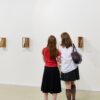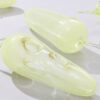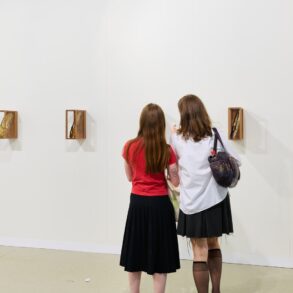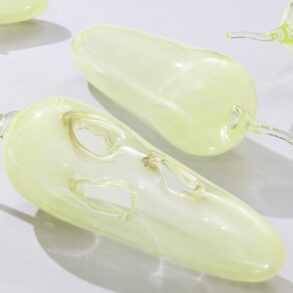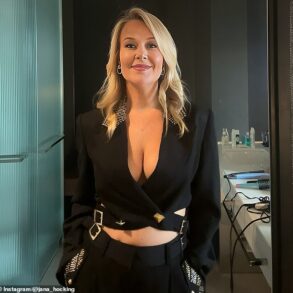Mary Delany (1700-88) was a witty memoirist of 72 when she in effect invented the paper collage in Britain. Noticing the affinity between a geranium and a scrap of red paper, she took her scissors and cut a petal from it freehand. The exquisite plant that grew from Delany’s work looked so exactly like a watercolour people mistook it for a painting. She had discovered a new way, she wrote to her niece, “of imitating flowers”.
Delany’s collages are startlingly beautiful – nearly transparent apparitions materialising on inky black paper. They have the translucence of both watercolour and actual pressed flowers. Two appear in this exhibition: a flowering raspberry glowing crimson against the blackness and a fragile white lily unfurling its petals, as it seems, by night. They might be emblems for the show itself: discoveries, and rediscoveries, brought out of darkness into light.
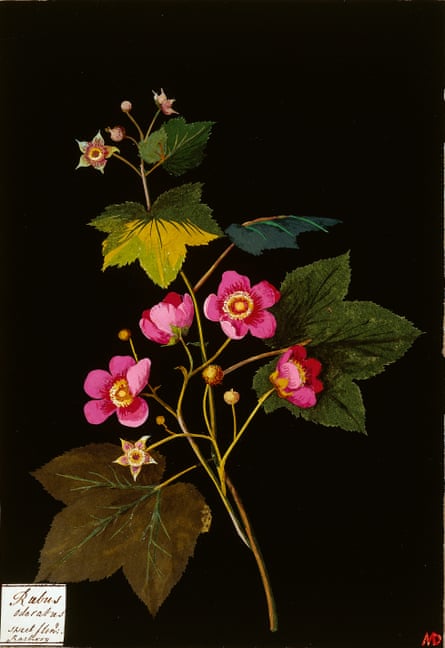
Tate Britain’s Now You See Us spans four centuries of art by more than 100 female artists. It is planted with revelations. Here are miniatures by Levina Teerlinc, Flemish “paintrix” at the court of Elizabeth I, including one of the young Gloriana with telltale ginger eyebrows attributed to Teerlinc. Lively portraits by Joan Carlile (1606-79) show satin-clad aristocrats with watery eyes and occasional double chins, real and recognisable women staring out of the canvas.
The poet and painter Anne Killigrew (1660-85) depicts herself barefoot, with an expression of unmitigated dismay, pretending to be Venus mourning Adonis. Sarah Biffin’s exceptional self-portrait on ivory (1821), neatly incorporating one of her own crisp miniatures, shows the brush attached to the neckline of her dress. Born without arms, Biffin painted with her mouth.
For every celebrated masterpiece – Artemisia Gentileschi’s momentous c.1638 self-portrait with dirty fingernails and sleeve falling away to expose her strong forearm, embarking on an equally bare canvas – there are at least 10 unfamiliar names. Margaret Meen’s glorious passiflora, spare, exquisite and horizonless as a Japanese watercolour, was painted in 1789. Louise Jopling, who studied in Paris and opened her own art school, introduces brilliant colour and seductive draughtsmanship to glum Victorian portraiture. Ethel Walker’s vast frieze of nude bathers, from 1920, shows traces of Cézanne and Degas but presents each woman as a distinct identity in the hazy blue light. Yet it has been as overlooked as its sister works.
Walker represented Britain more than once at the Venice Biennale, and that goes to the show’s central theme, which is women’s road to recognition as professional artists. Some never break through; others rise only to be forgotten again (Biffin, for instance, despite Charles Dickens’s repeated praise in novels). Others cannot make a proper living.
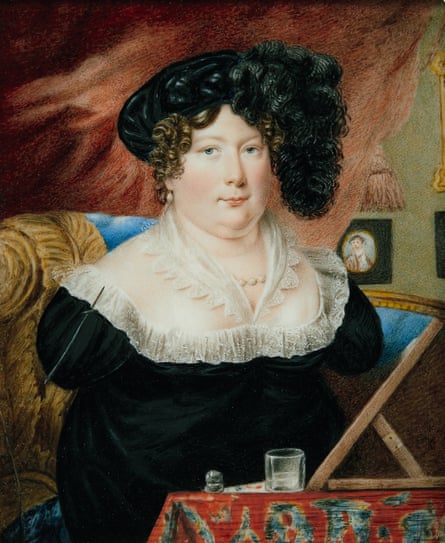



In 1839, Harriet Gouldsmith published (anonymously) A Voice from a Picture, a book in which one of her own landscapes protests at being badly hung at exhibitions and sold off cheap to pay the rent. Gouldsmith once overheard her art praised at a show only for the enthusiasm to wither on the discovery that she was female.
To this end, Now You See US opens not in 1520 but 1780, with Angelica Kauffman’s saccharine allegory of Invention as a goddess in wafty neoclassical wisps. An awful painting, to be sure, but it qualifies on two grounds: its personification of invention as female, and because Kauffman was one of the two female artists who co-founded the Royal Academy.
Here is a dilemma straight away: which should take precedence, the painting or the fact? Should the show present art on its own terms, or as instance, evidence, expression of social history? It is an extremely complex remit, especially given the high success of Tate Britain’s Women in Revolt: Art and Activism 1970-90, only recently closed and now touring to Edinburgh then Manchester. Now You See Us tries to go all ways.
So here is a marvellous 1857 painting of sheep on a Highland peak by French artist Rosa Bonheur, their soft wool graced by the fine Scottish light, their spirit of closeness made beautifully clear. It is a great work on loan from the Wallace Collection. But though Bonheur was extremely popular in Britain, particularly after Queen Victoria’s patronage, she only visited twice for a matter of months.
But she has a double function in this show, which is to reappear as an icon of female success in a neighbouring picture by Florence Claxton. Woman’s Work, 1861, is a satire on professional inequality, allegorised as a throng of women walled inside a ruined house, all the doors and windows blocked. Bonheur alone overcomes the barriers, painting the view from high up on a ladder. It is a distinctly literal skit.
after newsletter promotion
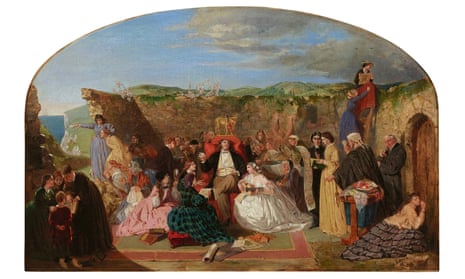



Claxton petitioned hard for the admission of women to the Royal Academy (none since Kauffman’s day), and joined the campaign for women’s right to attend life classes. A gallery is devoted to historical documents and photographs; yet the masterpiece here is not the male nude you might expect but a startling profile head in black chalk by Laura Knight.
Knight is strongly represented with a sequence of cliff-edge paintings; but what about her near-namesake, Winifred Knights? The Deluge is a shattering masterpiece of British modernism, painted in 1920 and thus eligible, yet not here. And why are the ethereal and supremely original blue cyanotypes of Anna Atkins (1799-1871) missing from the niggardly photography section, along with Christina Broom (1862-1939), pioneering photojournalist, whose stirring portraits of suffragettes would have been so apt?
The show is thick with flowers, descending from Delany right down to Helen Allingham’s twee cottage gardens, all ready for their postcard reproductions. And if Allingham, then why not the visionary genius of Beatrix Potter? Weak pre-Raphaelite schlock fills the largest gallery, along with Victorian pieties such as Emily Osborn’s distressed gentlewoman, eyes downcast, awaiting the verdict of a dealer on her latest canvas, while two male artists leer in the background. Nameless and Friendless is terminally mawkish.
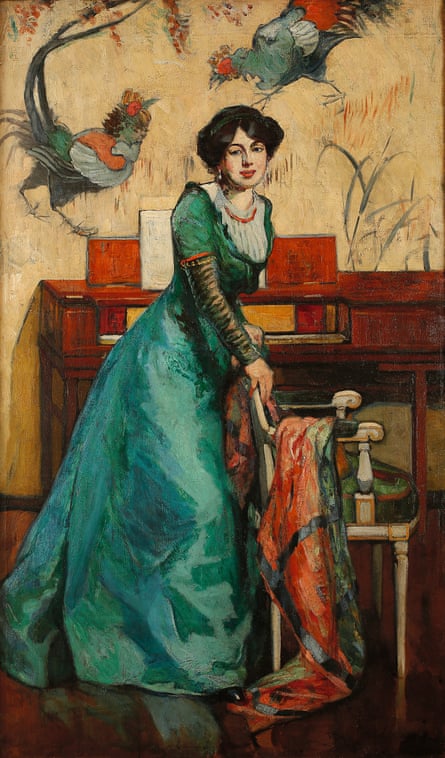



Only rarely do women’s art and women’s history spark together in this show. You see it in Ethel Wright’s fabulous 1912 portrait of the suffragette Una Dugdale Duval, in an arsenical green dress beneath a wallpaper of ludicrous fighting cocks, where Wright’s modern bravado exactly meets that of her sitter. And you see it in Gwen John’s immortal 1902 self-portrait, small and distanced, light catching her eyelashes in an atmosphere of hushed stillness, so direct and yet so self-contained: the momentous assertion of reticence.
That epochal image appears on the exhibition posters, perhaps promising too much. For even the best of the artists here are occasionally represented by the least of their works, quite apart from the mystifying omissions. The theme of Now You See Us is undoubtedly riveting. The captions (and the excellent catalogue) are superbly written. But art is trumped by social history too often in this show, words overshadowing images.
This post was originally published on this site be sure to check out more of their content

